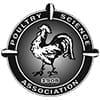Explore all the information on
Phytogenics in poultry nutrition
Phytogenics, also known as phytobiotics, are natural bioactive compounds of botanical origin that are used as alternatives to antibiotic growth promoters (AGPs) and are added to feed to enhance animal performance. Although phytogenics encompass a wide variety of substances of biological origin, formulation, chemical characterization, and purity, they can be classified into four groups: (1) herbs (products obtained from flowering, woody, and nonperennial plants); (2) botanicals (whole or processed parts of a plant, such as roots, leaves, tree bark, and spices); (3) essential oils (hydro-distilled extracts of volatile plant compounds); and (4) oleoresins (anhydrous solvent-based extracts). These plant-derived products do not contain residues, are natural, and are less toxic than synthetic antibiotics or inorganic chemicals. Many are generally recognized as safe (GRAS) by the U.S. Food and Drug Administration (FDA) and can be used as feed additives in animal nutrition.
Introduction Saponins are a broad group of plant-derived compounds composed of both water-soluble and fat-soluble moieties. These properties impart detergent-like qualities to these molecules that allow them to display many biological activities (Cheeke 2000). Studies of their function in plants have indicated that insect attack and invasion by pathogens are reduced in their presence (Sparg et al. 2004). Due to these activities, saponins have received much attention in the last...
Comments : 0
Recommendations: 0
Enteric diseases are one of the most important problems in the poultry industry because of high economic losses. In recent years, due to increasing resistance to antibiotics and coccidiostats, together with the ban of antibiotic growth promoters, necrotic enteritis and coccidiosis emerged as the most worrisome digestive diseases in the poultry industry....
Comments : 3
Recommendations: 5
WHAT IS HEAT STRESS? It is a combination of metabolic and environmental factors that forces animals to undergo physiological, metabolic and behavioral adaptations to maintain body temperature within normal limits and in a sustained mode. Heat stress occurs when the...
Comments : 0
Recommendations: 3
Laura Corbett (Anpario) talks to Sam Shafer (PSA) about the benefits and quality standards of these additives. Let's Squawk About It is a monthly interview segment by the Poultry Science Association....
Comments : 1
Recommendations: 1
INTRODUCTION Coccidiosis remains one of the most significant diseases affecting poultry production globally. It is well-recognized that infection with Eimeria parasites occurs in every location where chickens are raised and these infections influence growth, feed efficiency, mortality and the susceptibility to other diseases. As a result, the economic impact of coccidiosis is likely greater than any other disease affecting poultry production, with a recent global estimate of...
Comments : 0
Recommendations: 0
REDUCING ANTIBIOTIC USES? That’s our commitment. Since more than 25 years, at Liptosa we are specialized in nutraceuticals and phytobiotics. This allows us to offer competitive solutions to the market and the challenges it faces daily basis. This year, a common objective stands out: to minimize the use of antimicrobials. We want to help you, check out this Newsletter and contact us for any further information. ...
Comments : 0
Recommendations: 2


Developing effective natural solutions for animals - Liptosa: 2020 Summary and 2021 Challenges
Suggested link
Liptosa will be present at this event. We will take advantage of our presence with a commercial stand at this fair to present to our customers and the livestock sector our new launches and product reformulations; always aimed at improving animal productivity, from...
Comments : 1
Recommendations: 4
A new proof for the mechanism of action of in-feed resin acids was presented at the 7th International Conference on Poultry Intestinal Health (ICPIH2022). Dr. Hannele Kettunen presented a study conducted by Hankkija Finnish Feed...
Comments : 0
Recommendations: 0
New results on the effects of Progres® in laying hens were recently presented in the 7th International Conference on Poultry Intestinal Health (ICPIH2022), Cartagena De Indias,...
Comments : 0
Recommendations: 1
...
Comments : 0
Recommendations: 1
...
Comments : 0
Recommendations: 1
by Sam Shafer
As producers reduce antibiotic use, scientists examine new strategies to improve bird growth and health
Poultry scientists are investigating new ways to keep birds healthy and shift the poultry industry away from widespread use of antibiotics. Researchers are especially keen to improve antimicrobial strategies for organically raised chickens, which are not given antibiotics.
According to a new paper...
Comments : 0
Recommendations: 2
INTRODUCTION Medicinal plants are reservoirs of bioactive compounds used by humans since early ages in traditional medicine for the treatment and prevention of diseases due to their therapeutic potential (Arun and Varsha, 2014; Dilfuza et al ., 2015). According to Oluwafemi et al . (2020); Adewale et al . (2020), there are over 500,000 species of medicinal plants identified globally which has led to the discovery of novel drugs or new pharmaceuticals used...
Comments : 0
Recommendations: 2
.jpg&w=3840&q=75)

Practical AMINONIR® Application: From sampling to economic benefits
Suggested link
Carlos López, Area Manager for the Asian Market at Liptosa, speaks about the solutions this company offers for the Indian Subcontinent through Indo-Biocare Distributor, which consists of Phytogenics to control coccidia, Mycotoxin binder, Nutraceutical detoxifier, and performance improver, during Poultry India 2019.
*Certain information associated with products, their composition and claims may be different depending on the geographical region and may not be applicable in all countries....
Comments : 2
Recommendations: 1
INTRODUCTION Medicinal plants are reservoirs of bioactive compounds used by humans since early ages in traditional medicine for the treatment and prevention of diseases due to their therapeutic potential (Arun and Varsha, 2014; Dilfuza et al., 2015). According to Oluwafemi et al. (2020); Adewale et al. (2020), there are over 500,000 species of medicinal plants identified globally which has led to the discovery of novel drugs or new pharmaceuticals used for the treatment of...
Comments : 0
Recommendations: 1
Coccidiosis is one of the most wide-spread and economically important diseases in the poultry industry. Anticoccidial chemicals have long been used to prevent and control avian coccidiosis, but resistance to current anticoccidials and cross resistance to newly developed substances, together with...
Comments : 0
Recommendations: 0
Inflammation is a complex biological reaction to a harmful event, such as the presence of pathogens, toxins, or damaged cells. It involves the innate immune system, the blood vessels, and molecular mediators, promoting radical changes in the architecture and function of the tissue. Although inflammation is a...
Comments : 0
Recommendations: 2
As is widely recognized, phytogenics have antibacterial properties and can replace antibiotic growth promoters. However, it is less known that, when antibiotic therapy is necessary, phytogenics and antibiotics act in synergy, increasing the effectiveness of the antibiotic. When phytogenics and antibiotics are...
Comments : 0
Recommendations: 0










.jpg&w=3840&q=75)









.mp4&w=3840&q=75)






